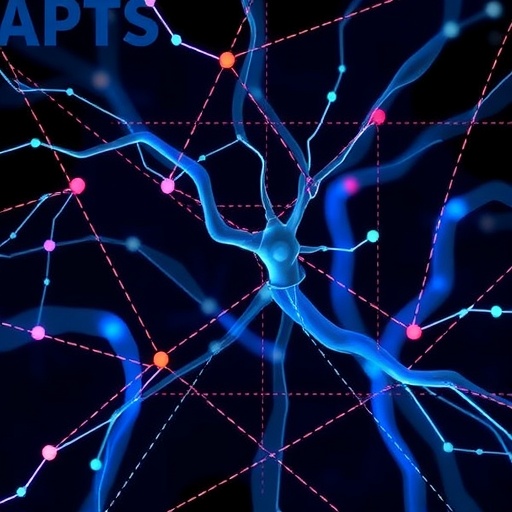In a groundbreaking new study, researchers have unveiled intricate early neural alterations in Parkinson’s disease (PD) models that exhibit depressive-like behaviors. This cutting-edge research sheds unprecedented light on the synaptic and connectivity deficits that could underpin the mood disorders commonly observed in Parkinson’s patients, an area that has previously eluded comprehensive understanding. By focusing on synaptic changes preceding overt motor symptoms, the research shifts the paradigm in how we perceive the early and non-motor manifestations of PD, offering promising avenues for therapeutic intervention and biomarker discovery.
Parkinson’s disease, long characterized by its hallmark motor impairments such as tremors, rigidity, and bradykinesia, often manifests with neuropsychiatric symptoms like depression, anxiety, and cognitive decline well before the classical motor signs emerge. These non-motor symptoms significantly impact patient quality of life but remain poorly understood at the neurobiological level. The recent study, conducted by Miquel-Rio and colleagues, dives deeply into the synaptic landscape of PD-like mouse models that display a depressive phenotype, revealing the earliest neural disturbances that might set the stage for these mood alterations.
The researchers employed an elegant mouse model that recapitulates both motor and non-motor aspects of PD, focusing on synaptic connectivity within critical brain circuits involved in mood regulation. Through state-of-the-art imaging and electrophysiological techniques, they mapped out aberrations in synaptic density and functional connectivity across brain areas such as the prefrontal cortex, hippocampus, and striatum. These regions are intricately linked to the regulation of mood and cognition and are often implicated in PD pathology.
.adsslot_rtdAucDQRP{ width:728px !important; height:90px !important; }
@media (max-width:1199px) { .adsslot_rtdAucDQRP{ width:468px !important; height:60px !important; } }
@media (max-width:767px) { .adsslot_rtdAucDQRP{ width:320px !important; height:50px !important; } }
ADVERTISEMENT
One of the standout findings of this study is the identification of distinct synaptic deficits that emerge early in the disease process. Synapses, the crucial junctions where neurons communicate, displayed notable reductions in density and altered electrophysiological responses in the PD-like mice exhibiting depressive behavior. This early synaptic pruning and dysfunction mirror similar phenomena observed in human depression but had not been explicitly connected to PD before. These discoveries bolster the hypothesis that synaptic integrity is pivotal for mood regulation and disrupted synaptic connectivity may be a shared pathological hallmark linking PD and depression.
Moreover, the team utilized advanced diffusion tensor imaging (DTI), a technique sensitive to microstructural brain connectivity, to demonstrate decreased interregional connectivity in the brains of PD-like mice. Reduced fractional anisotropy values in key white matter tracts suggested early microstructural deterioration, indicating that not only synaptic elements but also the broader neural network architecture is compromised. Such connectivity disruptions can fundamentally alter neural circuit function, resulting in aberrant mood regulation and cognitive dysfunction.
Intriguingly, the depressive phenotype in PD-like mice was tightly correlated with the degree of synaptic loss and diminished connectivity rather than with the severity of motor impairments. This decoupling suggests that mood symptoms in PD may stem from discrete pathological mechanisms distinct from those driving motor deficits, thus underscoring the need for targeted therapies that address these divergent pathways. This finding challenges the conventional view of PD as primarily a motor disorder and advocates for a more holistic approach in patient diagnosis and treatment.
The implications of these discoveries extend beyond the scientific sphere into clinical practice. Early detection of synaptic and connectivity alterations could pave the way for novel diagnostic biomarkers capable of identifying PD patients at heightened risk for developing depression. Such biomarkers would revolutionize patient stratification and enable personalized interventions before severe neuropsychiatric symptoms ensue. The study thereby propels the quest for precision medicine approaches in neurodegenerative diseases.
The study also sheds light on the temporal dynamics of PD pathology by establishing a timeline where depressive-like behaviors and synaptic deficits precede motor impairments. This prodromal phase, often overlooked in clinical contexts, could represent a critical window for intervention. By understanding the stages at which synaptic disturbances arise, clinicians and researchers can better time therapeutic strategies to halt or slow disease progression.
Notably, the research highlights the heterogeneity of PD pathology and symptomatology, emphasizing that different neural circuits may be differentially affected. The selective vulnerability of mood-related circuits adds a layer of complexity but also specificity in understanding and treating various PD symptoms. This nuanced perspective advocates for multidimensional assessments and interventions tailored to individual patient profiles.
The findings also underscore the importance of viewing PD as a systemic brain disorder involving widespread network dysfunction rather than being isolated to dopaminergic neuron loss. The interaction between synaptic pathology, connectivity breakdown, and neuroinflammatory processes portrait a complex pathological landscape. This comprehensive model could better explain the multiplicity of PD symptoms and informs integrated treatment approaches.
The translational potential of these findings is significant. Preclinical evidence of synaptic and connectivity biomarkers may guide the development of non-invasive imaging and biochemical assays usable in human patients. Integrating such techniques into clinical trials could enable responsive monitoring of neuropsychiatric symptoms and treatment response, facilitating adaptive trial designs and accelerated drug discovery.
In conclusion, the study by Miquel-Rio and colleagues marks a pivotal advance in understanding the neural underpinnings of depression in Parkinson’s disease. By charting early synaptic changes and network disconnections in a PD-like mouse model with depressive phenotype, the research not only expands fundamental knowledge but also proposes actionable hypotheses for therapeutics. As the field moves toward comprehensive models of neurodegeneration, integrating mood disorders within PD neuropathology will be crucial for improving patient outcomes and quality of life.
With the rising burden of Parkinson’s disease globally, the emergence of mood symptoms as early disease markers has enormous clinical significance. This research offers hope that with improved mechanistic insight, interventions can be shifted earlier, ideally before significant neuronal loss. Targeting synaptic health may become a cornerstone of future neuroprotective strategies, promising a new era in managing the multifaceted nature of Parkinson’s disease.
This work also invites the scientific community to rethink the interface of neurodegeneration and psychiatric comorbidities. It challenges outdated silos and argues for integrated research frameworks considering the brain as an interconnected organ with overlapping circuits vulnerable to disease. Such holistic approaches will ultimately transform both research paradigms and clinical paradigms, offering more refined and effective patient care.
Subject of Research:
Article Title:
Article References:
Miquel-Rio, L., Jericó-Escolar, J., Sarriés-Serrano, U. et al. Early synaptic changes and reduced brain connectivity in PD-like mice with depressive phenotype.
npj Parkinsons Dis. 11, 242 (2025). https://doi.org/10.1038/s41531-025-01073-1
Image Credits: AI Generated
Tags: biomarkers for Parkinson’s diseaseconnectivity deficits in depressed micedepressive-like behaviors in Parkinson’searly neural alterations in Parkinson’simpact of depression on quality of life in PDmood disorders in Parkinson’s patientsneurobiological basis of depression in PDnon-motor symptoms of Parkinson’s diseaseParkinson’s disease mouse modelssynaptic changes and mood regulationsynaptic loss in Parkinson’s diseasetherapeutic interventions for PD depression





